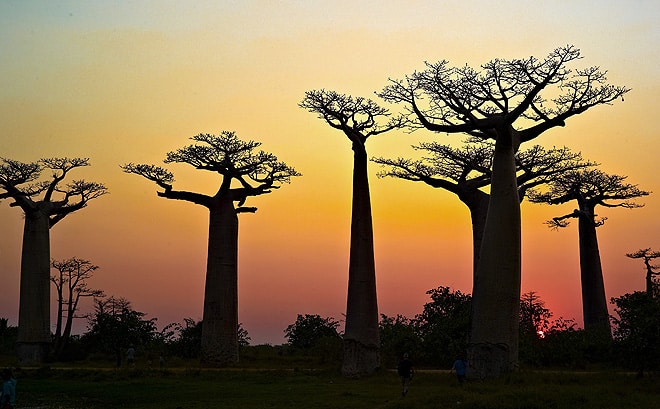The Baobabs of Madagascar
Imposing and poetic trees, baobabs animate legends. The sight of this majestic tree instantly feeds everyone's imagination and curiosity.
According to a local legend, the "Zanahary" found the baobabs a little too proud and to punish them, he replanted them upside down. Madagascar was still favored by the gods because it is the big island that has the largest number of species. Of the 08 existing species, 06 are endemic. Moreover, it is the only place in the world where you can see baobab forests.
Baobab, bottle tree… Etymologically, its name comes from the Arabic word “BU HIBAB” meaning “fruit with abundant seeds”. In the local language they are called Zà, Zabe, Zamena, Zahamena, Ringy, Hazobetroka, Betroka, Renala or even Reniala refer to its very restricted crown and the cylindrical shape of the trunk.
The spongy interior is provided with a thick and reddish bark presents a fibrous space containing an impressive quantity of water. The Baobab can reach a height of 6 to 30 meters depending on the species. The leaves are only present 3 months a year, in the rainy season and followed by a period of flowering. These flowers then give large berries with a round or ovoid shape. The fruits have a diameter of about 10 cm.
It is an evergreen tree that can live up to two thousand years. Adansonia digitata, native to Africa, has fairly large foliage like Adansonia gibbosa from Australia, a small species rarely reaching ten meters. The other six endemic to Madagascar are Adansonia madagascariensis, Adansonia Zà, Adansonia grandidieri (the most common in Madagascar) considered the most admirable of all bottle trees, Adansonia suarenzensis and Adansonia perrieri (endangered, isolated in a small territory in the north of the country); and finally the Adansonia rubrostipa (fony), the smallest species, four to five meters high at most.
The Baobabs are in danger, because of the intense deforestation that the Big Island is experiencing globally. Clearing, and of course, bush fires are also threats. From an ecological point of view, collecting the fruits and seeds of the tree prevents its multiplication. In addition, pollinating animals such as lemurs and bats are also rare. Ex-situ conservation remains a major asset for the survival of these oh so emblematic trees of the big island.
His majesty the Reniala
08/23/2020
0 comment



Comment (0)